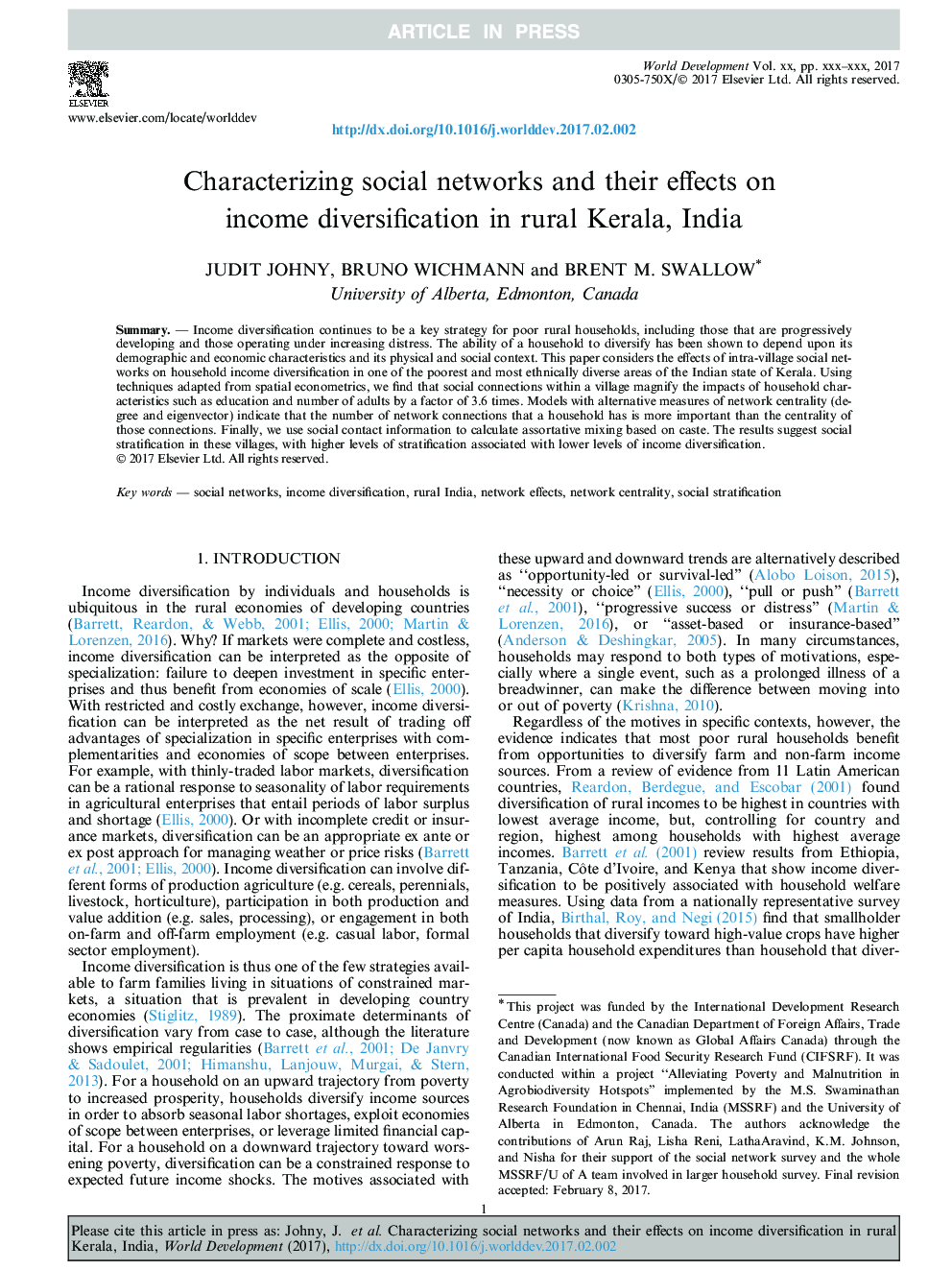| Article ID | Journal | Published Year | Pages | File Type |
|---|---|---|---|---|
| 5105223 | World Development | 2017 | 18 Pages |
Abstract
Income diversification continues to be a key strategy for poor rural households, including those that are progressively developing and those operating under increasing distress. The ability of a household to diversify has been shown to depend upon its demographic and economic characteristics and its physical and social context. This paper considers the effects of intra-village social networks on household income diversification in one of the poorest and most ethnically diverse areas of the Indian state of Kerala. Using techniques adapted from spatial econometrics, we find that social connections within a village magnify the impacts of household characteristics such as education and number of adults by a factor of 3.6 times. Models with alternative measures of network centrality (degree and eigenvector) indicate that the number of network connections that a household has is more important than the centrality of those connections. Finally, we use social contact information to calculate assortative mixing based on caste. The results suggest social stratification in these villages, with higher levels of stratification associated with lower levels of income diversification.
Keywords
Related Topics
Social Sciences and Humanities
Economics, Econometrics and Finance
Economics and Econometrics
Authors
Judit Johny, Bruno Wichmann, Brent M. Swallow,
